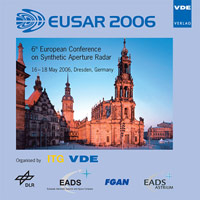An Experiment Plan to Test RADARSAT-2’s GMTI Capabilities
Konferenz: EUSAR 2006 - 6th European Conference on Synthetic Aperture Radar
16.05.2006 - 18.05.2006 in Dresden, Germany
Tagungsband: EUSAR 2006
Seiten: 4Sprache: EnglischTyp: PDF
Persönliche VDE-Mitglieder erhalten auf diesen Artikel 10% Rabatt
Autoren:
Beaulne, P. D.; Livingstone, C. E. (Defence Research and Development Canada (DRDC) - Ottawa, Canada)
Inhalt:
The RADARSAT-2 (R2) satellite, scheduled for launch in late 2006, carries a commercial C-band Synthetic Aperture Radar (SAR). It will implement an experimental Ground Moving Target Indication (GMTI) configuration called the Moving Object Detection Experiment (MODEX). The Canadian Department of National Defence (DND) intends to use MODEX to demonstrate the feasibility and military utility of spaceborne SAR-GMTI measurements for various situational awareness, surveillance and monitoring applications. Due to R2’s orbit coverage and revisit rates, MODEX is not expected to provide significant operational military capability in its current incarnation. Rather, it is primarily intended to assess the potential of space based GMTI and to provide information and recommendations for the conception and design of future operational space based GMTI systems. As such, a series of post launch tests and experiments will be necessary to explore the performance of the entire R2-GMTI system. The aim of the post launch trials will be to investigate, in differing clutter environments, the most promising configurations of the R2-GMTI system for military use. This paper will give an overview of past airborne GMTI flight trials as well as present plans for post-launch trials.


